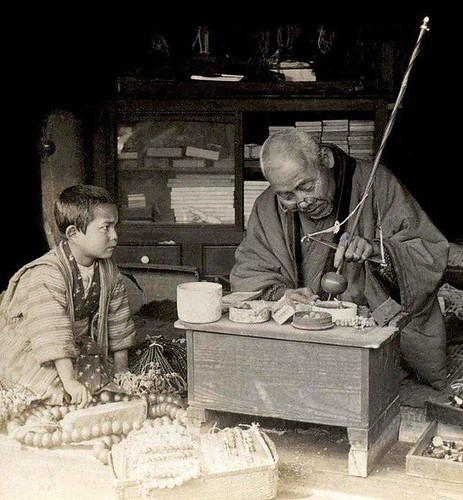 I just read a fabulous article on Cognitive Apprenticeship by . It's available online here: http://www.21learn.org/site/archive/cognitive-apprenticeship-making-thinking-visible/1. Their theory is that the model from which we learn most naturally is as apprentices and that it is possible to re-design school learning so that even cognitive-based tasks are learned/taught in an apprenticeship model.
I just read a fabulous article on Cognitive Apprenticeship by . It's available online here: http://www.21learn.org/site/archive/cognitive-apprenticeship-making-thinking-visible/1. Their theory is that the model from which we learn most naturally is as apprentices and that it is possible to re-design school learning so that even cognitive-based tasks are learned/taught in an apprenticeship model."But in school, teachers are working with a curriculum centered around reading, writing, science, math, history, etc. that is, in large part, divorced from what students and most adults do in their lives. In cognitive apprenticeship, then, the challenge is to situate the abstract tasks of the school curriculum in contexts that make sense to students."
A difficulty is that in a traditional apprenticeship the tasks are well-defined and focused on a discrete output.
"The tasks in schooling, however, demand that students be able to transfer what they learn. In cognitive apprenticeship, the challenge is to present a wide range of tasks, varying from systematic to diverse, and to encourage students to reflect on and articulate the elements that are common across tasks. As teachers present the targeted skills to students, they can increasingly vary the contexts in which those skills are useful. The goal is to help students generalize the skill, to learn when the skill is or is not applicable, and to transfer the skill independently when faced with novel situations."
 They go on to suggest a series of teaching methods that help students see the applicability of the content to a variety of tasks and that help them transfer what they have learned in one context to other contexts.
They go on to suggest a series of teaching methods that help students see the applicability of the content to a variety of tasks and that help them transfer what they have learned in one context to other contexts."Teaching methods should be designed to give students the opportunity to observe, engage in, and invent or discover expert strategies in context. Such an approach will enable students to see how these strategies combine with their factual and conceptual knowledge and how they use a variety of resources in the social and physical environment. The six teaching methods advocated here fall roughly into three groups: the first three (modeling, coaching, and scaffolding) are the core of cognitive apprenticeship, designed to help students acquire an integrated set of skills through processes of observation and guided practice. The next two (articulation and reflection) are methods designed to help students both to focus their observations of expert problem solving and to gain conscious access to (and control of) their own problem-solving strategies. The final method (exploration) is aimed at encouraging learner autonomy, not only in carrying out expert problem-solving processes but also in defining or formulating the problems to be solved."
Go read this one!
Lisa(Photo credits: Sorcerer's hat from Loren Javier, http://www.flickr.com/photos/lorenjavier/5382572927/ , Apprentice from Okinawa Soba, http://www.flickr.com/photos/24443965@N08/2585609947/)
No comments:
Post a Comment